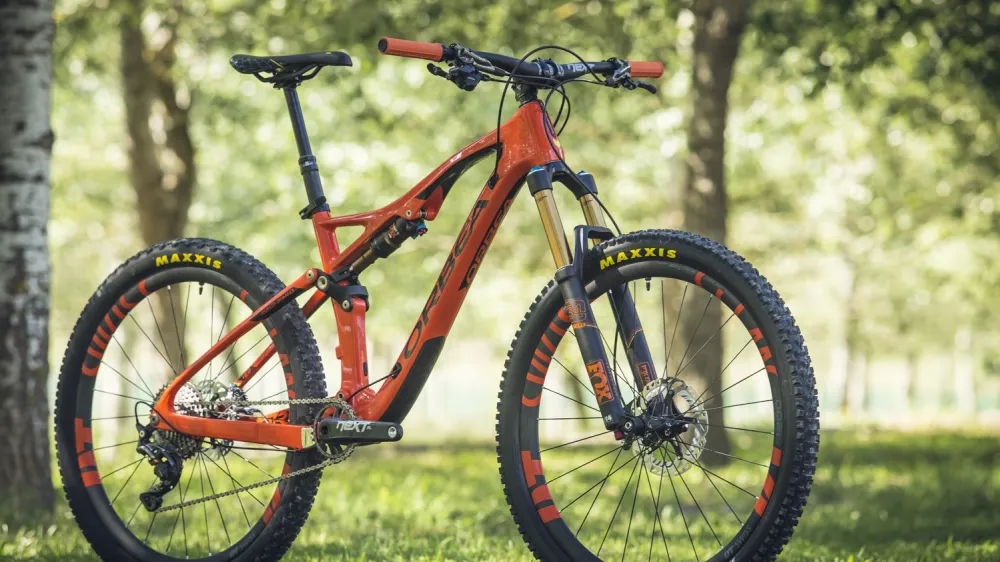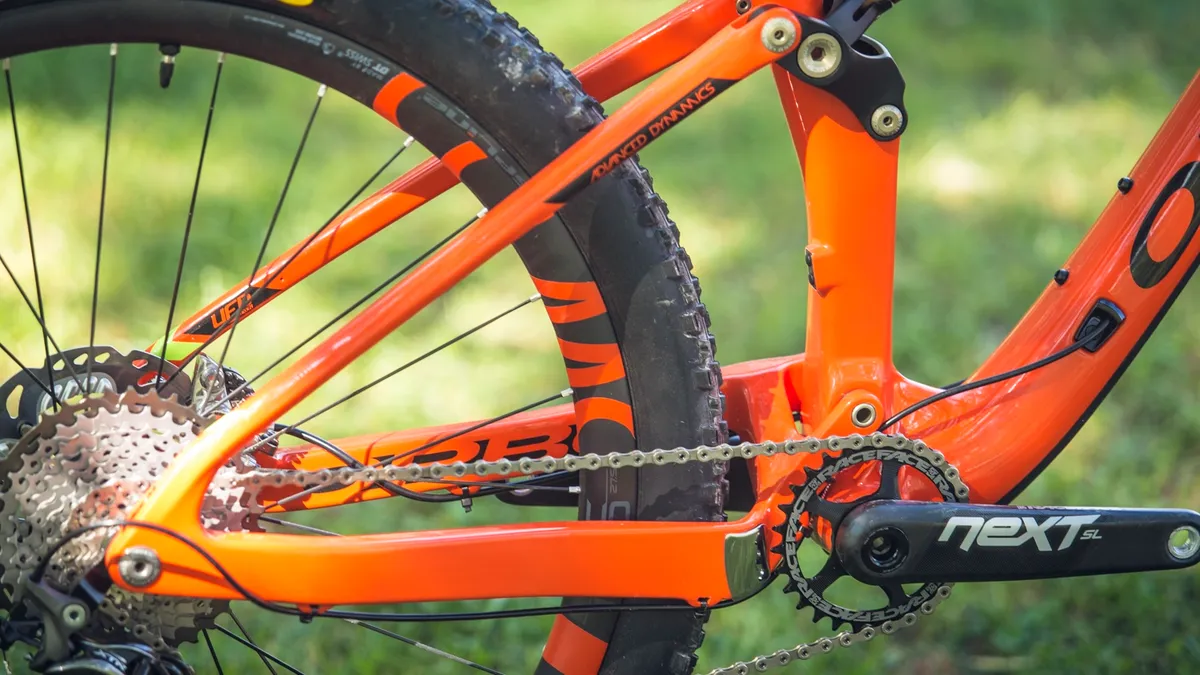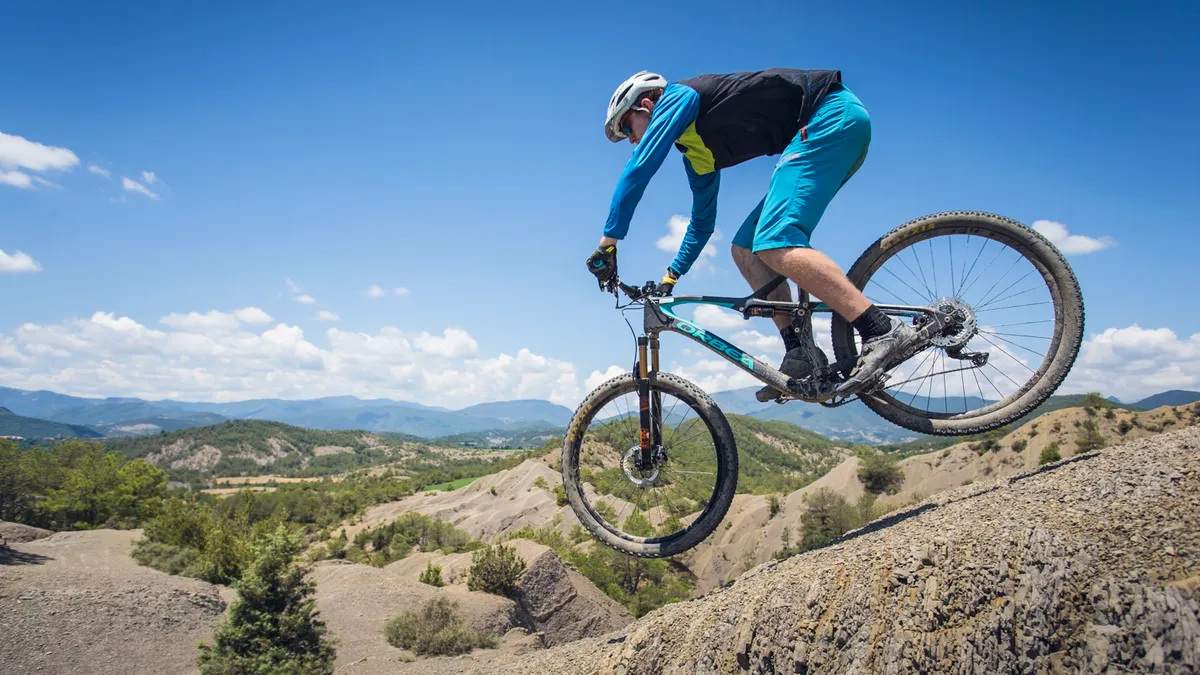Orbea's new Occam TR is a 120mm travel 29er built for fast and efficient riding, while the new Occam AM is a 140mm travel 650b trail steed, with a bias towards fun and descending. Both are available in a range of alloy and carbon models, with prices starting at £1,600 / US$2,200.
After discussing the design and development of the bikes with Orbea’s team of engineers and product managers, we were able to ride both bikes on some stunning Spanish singletrack. Once the dust had settled, a few features stood out.
We weighed the top-tier Occam AM in size medium, and found it to tip the scales at just 10.97kg / 23.79lb. Impressive.
The Occam TR uses boost hubs front and rear to increase lateral stiffness in those 29in hoops. This also helped the engineers to keep rear tyre clearance reasonable with short 435mm chainstays. Whilst the introduction of this new standard in controversial, the benefits are clear– they provide 29in wheels with the lateral stiffness of equivalent 650b hoops, without adding weight or sacrificing vertical compliance.

The Occam TR
On the more expensive carbon models, the rear pivot has been done away with in place of a flexible seatstay. This saves about 150g over a traditional pivot (and that’s unsprung mass, too), whilst also reducing maintenance needs and bearing friction. We were concerned that this design would cause lateral flex in the rear end, but these fears were silenced on the trail where we could not detect any significant bending. The alloy versions use a concentric pivot about the rear axle using cartridge bearings.
Orbea uses quality Enduro bearings throughout to improve longevity. They also provide bosses for external cable routing should you need to replace a brake, and they provide a lifetime warranty, too. Other options include the ability to swap out small parts like stems, tyres and even paint colour to your specifications.
First ride impressions on the trail
Short 425mm chainstays and relatively conservative 67-degree head angle make the Occam AM a nimble and agile trail bike rather than a stable and planted one. Wide handlebars and a short-ish stem lend some stability for more aggressive riding, and the Maxxis High-roller2/Ardent tyre combination allows for some spirited cornering capers. Unfortunately, we couldn’t get a true sense of the bike’s character due to the fact that the AM is only available in Small, Medium and Large; our tester was too tall for the size Large test bike, and as a result it felt nervous and twitchy. Once we have had one in for testing, we’ll let you know how it stacks up with a tester who fits it better.

The Occam AM is a nimble trail machine
The Occam TR is a little more of a cross-country bike thanks to its big wheels and shorter 120mm travel. Maxxis Ardent tyres at each end make it a fast mile-muncher as stock, but these tyres were a real handful on the loose rocky ground of our test course. The geometry tells a slightly different story, however. The 68-degree head angle is relatively slack for a 29er of this travel, and reach figures are similarly stability-inducing: quite roomy for a bike of this type. The boost wheels on our test bike were the same as those on the base model (DT Swiss X 1900) but they felt stiff enough for some aggressive riding and deliberate sideways heavy-handedness without off-putting flex. The Fox 32 fork was a bit limiting, though, spiking noticeably due to bushing bind on harsh square-edged hits. Lighter, or less aggressive riders will be hard pushed to notice this. The Occam TR is a fast and light big-wheeler but a change of tyres would allow it to be ridden quite hard too.
One issue we did experience with both bikes was the regressive rear suspension kinematic which Orbea say allows gentler users to use the full travel, but this had us bottoming-out quite readily and wallowing through the travel excessively. We’d recommend using a large volume spacer in the shock to compensate for this.
Availability is expected by the end of July.
For more information, vistit www.orbea.com.






